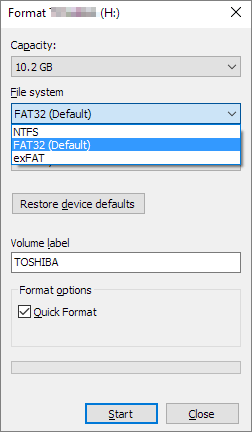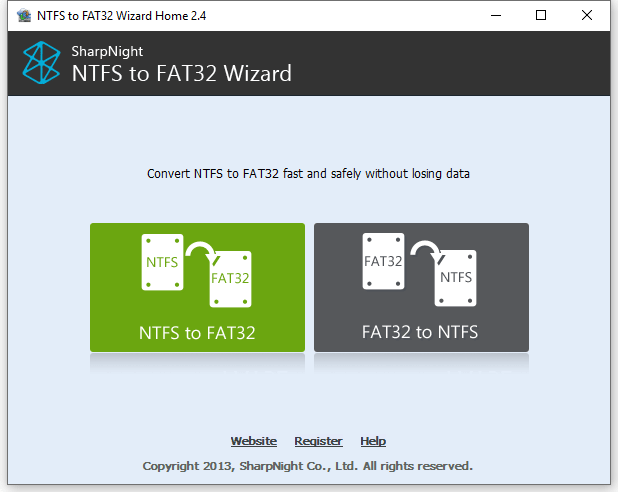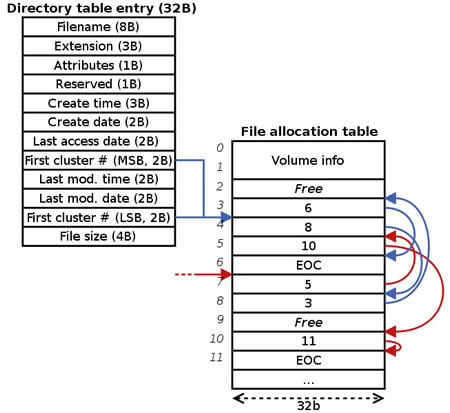

A file stored on a «FAT32» drive cannot be larger than 4 GB. Nevertheless, «FAT32» has certain system limitations.
#Ntfs or fat32 how to#
💽 How to Fix a Pen Drive or External Hard Disk Not Showing Up? 💻
#Ntfs or fat32 Pc#
This file system allows using FAT32 storage devices with both newer PC models and older machines or consoles as long as they have a «USB» port. The space in «FAT32» is logically divided into several parts: a reserved region, FAT region, root directory region, and data region where file contents are stored. «FAT32» file systemĪctually, «FAT32» is a newer standard developed to replace earlier file systems like «FAT», «FAT12» and «FAT16», and it is the default choice for most types of removable drives. To protect the volume from accidental errors that may affect correct table presentation, two copies of the table are kept, in case one becomes damaged. In other words, «FAT» file system is a group-type method of organization, where the file allocation table is a separate logical area which resides at the beginning of the volume.

This is a simple classic file system originally designed for small disks and simple folder structures. The abbreviation «FAT» stand for «file allocation table».

Below, we will describe particular file systems in detail. In spite of their common goals, «NTFS» and «FAT» file systems differ by how they organize and store data, and by the way they treat file attributes. What are file systems «FAT», «FAT32», «exFAT» and «NTFS»Īs the most large-scale operating system for computing devices, «Windows» is designed to interact with various file systems ( «NTFS» and «FAT»), but «NTFS» supports larger file and volume size and ensures more efficient ways to organize data, in comparison with other file systems.
#Ntfs or fat32 software#
The main functions of a file system can be narrowed down to building a logical model for organizing a storage device space that would be fail-safe to power issues and hardware or software errors, and ensuring seamless interaction between elements of the operating system / software applications and information stored on such device. 📚 RAID Systems: Definition, Types and How to Create One 💽 devices with random or sequential access, virtual and network file systems, optical disks, flash memory devices etc.
#Ntfs or fat32 drivers#
File system drivers organize clusters of the available disk space into files and directories, and generate the list of such organization, which then forms the basis for tracking and marking used, vacant or damaged clusters, and enables jumping to certain data storage cells at the request of the operating system.įile systems are meant to maintain all kinds of storage devices and manage various types of them, e.g. Software environment for managing computer hardware identifies any storage device as a set of typical clusters. File system parameters predetermine the format of contents, arrange it into the way clearly understood by the operating system as a set of files and directories, set up the maximal size for files and partitions, manage access priorities, file encryption, assign file attributes and redirect operating system requests to areas where the corresponding data is stored. Definition of the term “file system”Ī file system is the type of organization that determines how various data is allocated, stored and retrieved, on and from storage in computing and other devices that are designed with digital data in mind. In this article, we will try to explore the notion of a file system and find answers to some of the most important questions such as «What are file systems «FAT», «FAT32», «exFAT» and «NTFS», and how they differ from each other?». For ordinary users, though, the difference between various file systems is not too obvious. The most popular and widespread file systems «NTFS», «FAT», «FAT32» and «exFAT». 🐞 How to Fix the Error “VMware Workstation and Device/Credential Guard are not compatible” 🖥️


 0 kommentar(er)
0 kommentar(er)
